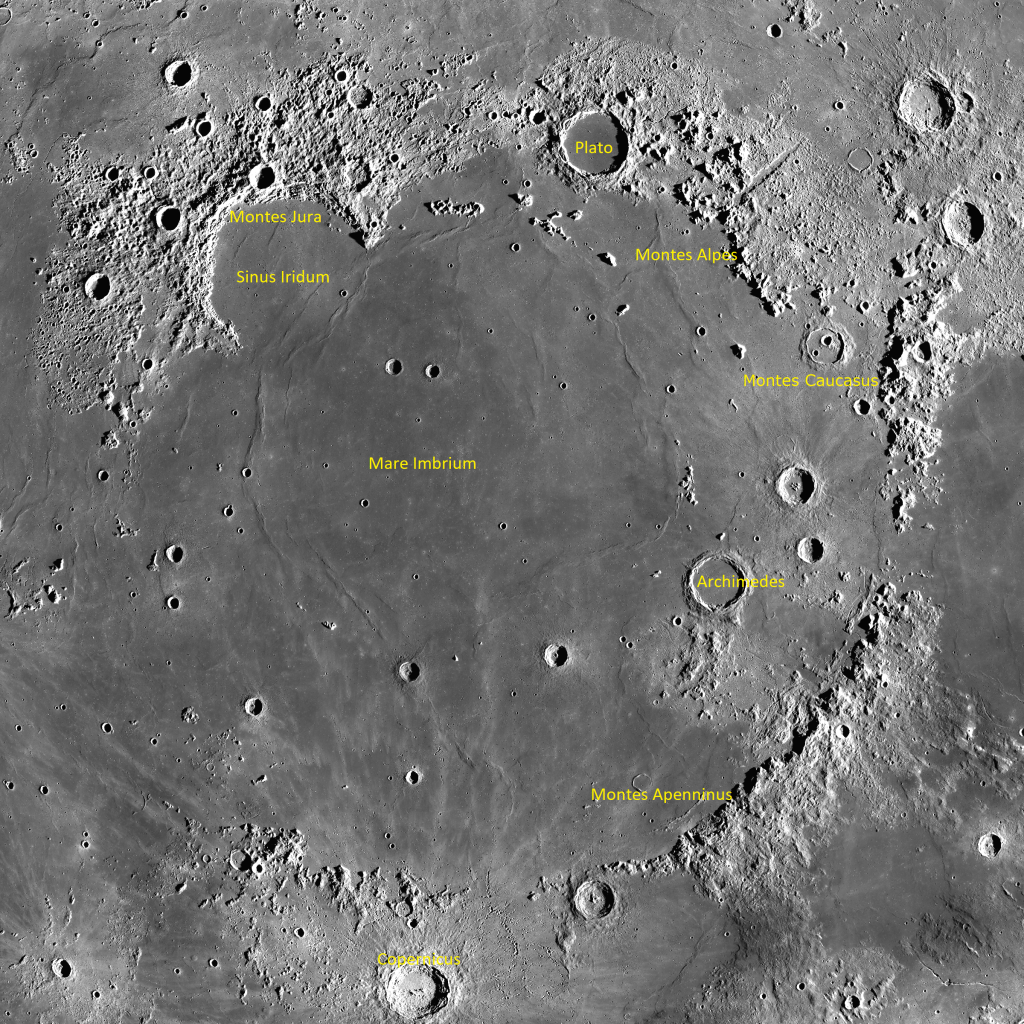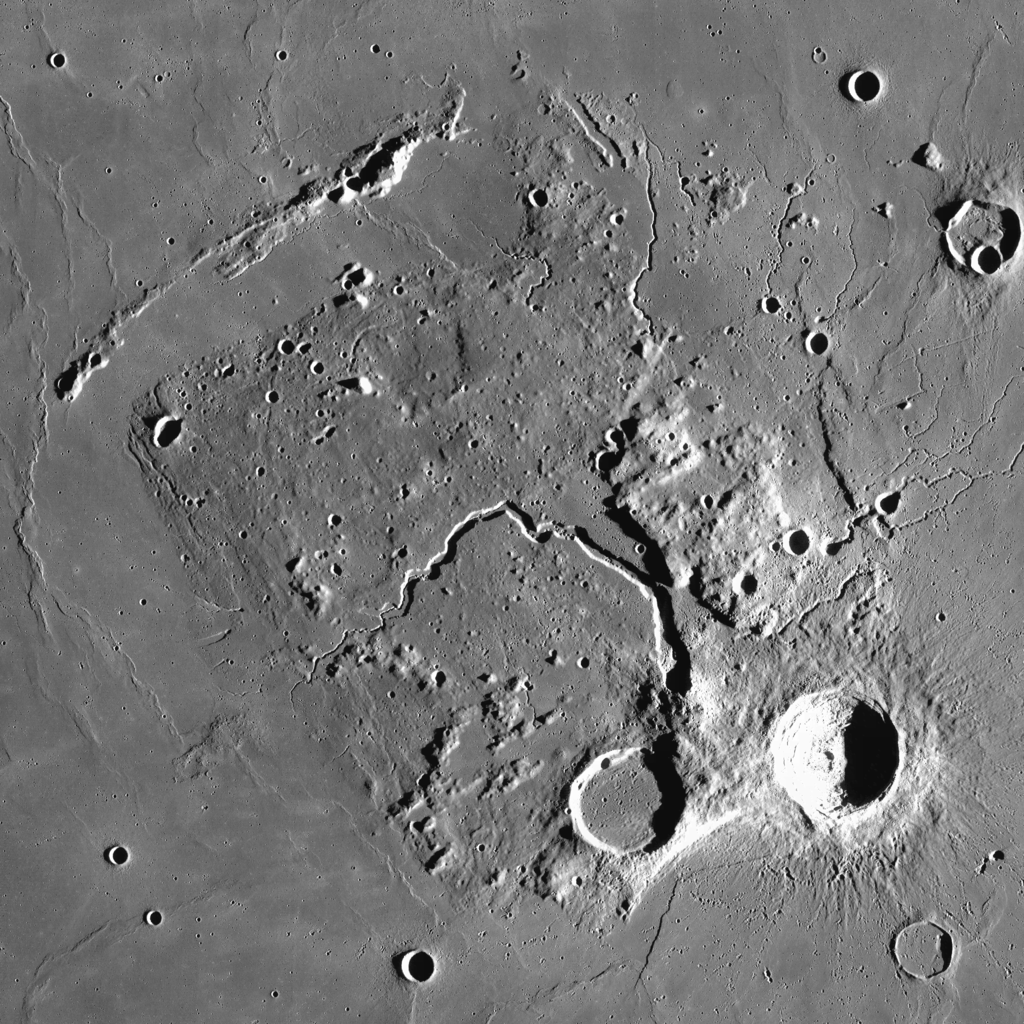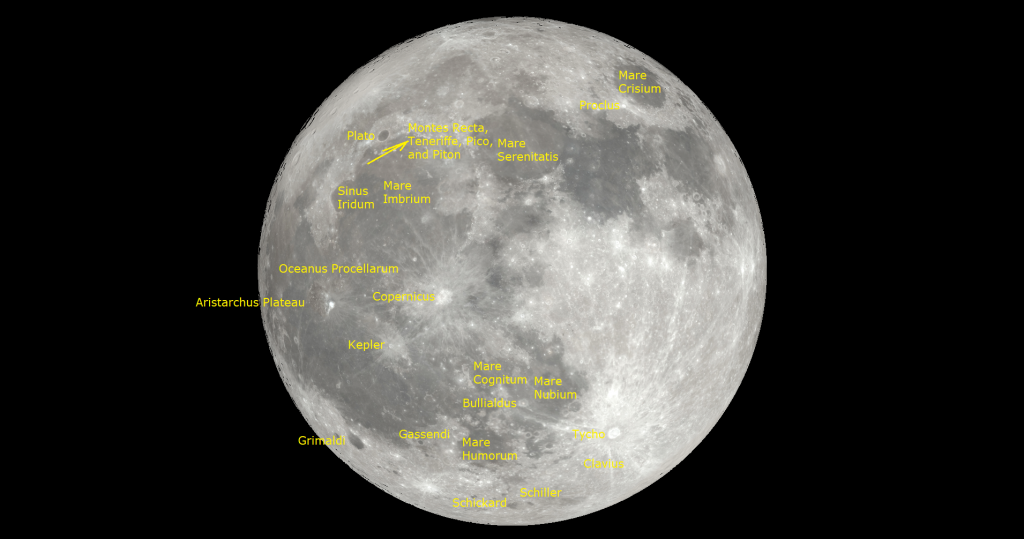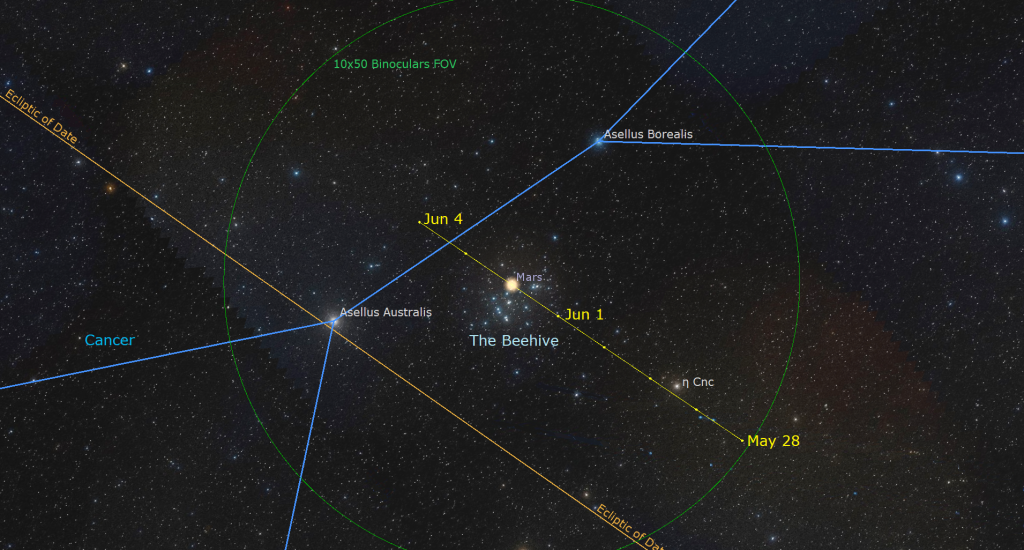Evening Luna Lights Up, Mars Buzzes the Beehive, Venus Peaks, and Planets Play at Dawn!

On Saturday, June 3, the full Strawberry Moon will rise at sunset. This simulation shows the moon at 10 pm local time. The bright reddish star to its upper right of the moon will be Antares, the “Rival of Mars” and the brightest star in Scorpius, the Scorpion. They’ll be cosy enough to share the view in binoculars (orange circle). (Starry Night Pro)
Hello, end-of-May Stargazers!
Here are your Astronomy Skylights for the week of May 28th, 2023 by Chris Vaughan. Feel free to pass this along to your friends and send me your comments, questions, and suggested topics. I repost these emails with photos at http://astrogeo.ca/skylights/ where the old editions are archived. You can also follow me on Twitter as @astrogeoguy! Unless otherwise noted, all times are expressed in Eastern Time. To subscribe to these emails please click this MailChimp link.
If you’d like me to bring my Digital Starlab portable inflatable planetarium to your school or other daytime or evening event, or deliver a session online, contact me through AstroGeo.ca, and we’ll tour the Universe, or the Earth’s interior, together! My terrific book with John A. Read entitled 110 Things to See With a Telescope is a guide to viewing the deep sky objects in the Messier List – for both beginners and seasoned astronomers. DM me to order a signed copy!
The moon will wax to full this week, so I highlight the next set of nightly lunar features to view in binoculars and telescopes. Also in Evening, Venus will reach its greatest angle from the sun and Mars will cruise through the Beehive Cluster. At the other end of night, the bright planets Saturn, Jupiter, and Mercury will shine. Read on for your Skylights!
Late Sunsets
The nights are still getting shorter and the days longer at mid-northern latitudes – but the rate of change is slowing as we head toward the June solstice in about three weeks. Astronomers really feel the effects of the solstice. From mid-May to the end of July, we get more than 14.5 hours of daylight. That cuts our stargazing-time dramatically. This week, the daylight is increasing by 1.5 minutes per day.
At the latitude of Toronto, it won’t be completely dark outside until 11 pm, and then the sky will start to brighten again at 3:30 am – for a total of 4.5 hours of true darkness. We also can’t start the fun until much later at night due to Daylight Savings time. Without that, we’d have dark skies at 10 pm. We shouldn’t complain too much, though – better a warm summer breeze than frostbitten toes!
While we warm up, for our family and friends in the southern hemisphere, the long nights of winter have arrived.
The Timeanddate.com Sunrise & Sunset page is a terrific resource for finding out the timings where you live. To plan your stargazing, pay attention to the end of Astronomical Twilight, although you can start to view brighter stars about 50 minutes earlier, at the end of Nautical Twilight.
The Moon
Last week I highlighted the sights on the moon you can enjoy as it waxes in illuminated phase. This week the moon will be waxing to full, so it will once again dominate (and illuminate) night skies worldwide. Everyone on Earth sees the same phase of the moon! You only need to wait for your time zone to have its turn.
Today (Sunday) the waxing gibbous (i.e., more than half-illuminated) moon will rise around 2 pm local time and spend the afternoon climbing the southeastern sky. You can easily see the moon in daylight at that phase. Binoculars and telescopes will work on the moon, too – but take extra care not to swing your optics anywhere near the sun. Once the sky darkens after 9:30 pm the brightest stars of nearby Leo (the Lion) and Virgo (the Maiden) will appear flanking the moon halfway up the southwestern sky.
The moon’s eastward orbital motion will carry it through Virgo, which is so lengthy that it takes the moon several days to do it! On Monday night, the 73%-illuminated moon will shine a few finger widths to the right (or 4° to the celestial west-northwest) of the fine double star named Porrima. That star’s name arose from the two Roman goddesses of prophecy. Antevorta or Porrima or Prorsa (short for Proversa) could see the future, while her twin sister Postverta or Postvorta was the goddess of the past. Together they were two companions of Carmenta the goddess of childbirth and oracles. We get the word “charm” from the same root.
On Tuesday night, the moon will shine brightly between Virgo’s brightest star Spica and Porrima. The very bright, warm-tinted star shining high above the moon will be Arcturus. It will sparkle on high all month long.
The 89%-full moon will hop to sit a generous palm’s width to the left of Spica on Wednesday. The moon will open June in Libra (the Scales). On Friday night the bright, nearly full moon will shine in eastern Libra and to the upper right of the claw stars of Scorpius (the Scorpion). Libra’s stars used to make up the much larger claws of that fearsome critter!
The moon will officially reach its full moon phase at 11:42 pm EDT and 8:42 pm PDT on Saturday night, which converts to 03:42 Greenwich Mean Time on Sunday, June 3. The June full moon, colloquially known as the Strawberry Moon, Mead Moon, Rose Moon, Birthing Moon, or Hot Moon, always shines in or near the stars of Scorpius or Sagittarius (the Archer). The indigenous Ojibwe people of the Great Lakes region call this moon Ode’miin Giizis, the Strawberry Moon. For the Cree Nation it’s Opiniyawiwipisim, the Egg Laying Moon (referring to the activities of wild water-fowl). The Mohawks call it Ohiarí:Ha, the Fruits are Small Moon. The Cherokee call it Tihaluhiyi, the Green Corn Moon, when crops are growing.
The moon is only completely full when it is opposite the sun in the sky, so full moons always rise in the east as the sun is setting, and set in the west at sunrise. For this full moon, observers on the west coast of Canada and the USA will see the moon rise when it is precisely full. At other longitudes the moon will be a bit less than full or a bit past full.
When the full moon clears rooftops towards the southeast in late evening on Saturday, it will also be shining several finger widths to the lower left of Scorpius’ brightest star, reddish Antares, the “Rival of Mars”. As the hours pass, the moon’s easterly orbital motion will carry it farther from Antares and the diurnal motion of the sky will lift the moon higher than the star. The duo will be close enough to share the view in binoculars for most of the night.
When the bright moon rises next Sunday night after 11 pm local time, binoculars or a backyard telescope will show that the terrain arcing around its right-hand (or eastern) limb is once again casting shadows – the beginnings of its waning phase. Night owls can watch that moon shining near the spout of the Teapot-shaped stars of Sagittarius (the Archer). While you won’t see the Milky Way, the moon will be located very close to the spot in the sky where the centre of our home galaxy is.

Let’s review a few of the best sights to see on a magnified moon. When many of these features first appear to the east of the curving pole-to-pole terminator, they’ll be most spectacular. Long, dark shadows will extend to the west of every rim, bump, hill, and mountain peak, and the bowls of craters will resemble inky pools with brilliant rings. On the following nights, those same features will change their appearance as the sun’s rays illuminate them from higher and higher incident angles. Be sure to check them out on several nights.
Tonight (Sunday) the terminator will pass north-south through the large and circular Imbrium Basin. Use any size of telescope to look for sinuous wrinkle ridges slithering over the seemingly flat floor of that large mare. The three spectacular and tall mountain ranges that ring the eastern half of the basin will still look spectacular. The dark, round, and smooth crater named Plato will break up the northern arc of the Alpine Mountains. A curving chain of little mountain peaks will poke out of Imbrium’s gray floor below Plato. Those include Montes Recti, Montes Teneriffe, and the single peaks of Mons Pico and Mons Piton.
At the southern edge of the big circle, the Apennine Mountain range sinks almost out of sight after it passes the peaked crater Eratosthenes. Depending on what time you look, the big crater Copernicus may look like a dark, bottomless well with its western rim ridge appearing as a series of bright dots. And don’t forget to enjoy my favorite crater Clavius near the moon’s southern pole. Binoculars or a backyard telescope will reveal a curved chain of craters, each descending in diameter, inside Clavius.
On Monday night, Copernicus will be fully revealed. Watch for a broad blanket of rubble spread around Copernicus’ exterior. The mountainous area sitting just above Copernicus are the Montes Carpatus – a continuation of Imbrium’s ringed perimeter. Farther south, smaller Mare Cognitum the “Sea of Knowledge” and Mare Nubium the “Sea of Clouds” will appear. Nubium has been marred by a number of craters. The largest is Bullialdus.

Monday night will also deliver the Golden Handle on the moon, a clair-obscur phenomenon. The northwestern edge of Mare Imbrium is interrupted by the curved bay of Sinus Iridum “the Bay of Rainbows”. That semi-circular, 249 km diameter feature is a large impact crater that was later flooded by the same basalts that filled Mare Imbrium – forming a rounded bay on the western edge of the mare. The “Golden Handle Effect” is produced when low-angled sunlight strikes only the tops of the prominent Montes Jura mountain range surrounding Sinus Iridum on the north and west – the original crater rim – while the rest of the mountains and the bay’s western floor are still dark. Sinus Iridum is almost craterless, but hosts its own set of northeast-oriented wrinkle ridges. In a backyard telescope you can see where the mountains submerge below the basalts, forming the lunar promontories named Laplace (the northern tip) and Heraclides (the southern tip).
On Tuesday night, all of Mare Imbrium will be in view. On its west and south edges it blends into the vast, grey realm of Oceanus Procellarum “the Sea of Storms”. Tucked alongside the southern part of the terminator, watch for the well-defined dark oval of Mare Humorum “the Sea of Moisture”. The large, peaked crater Gassendi will occupy its upper (northern) edge is. Gassendi’s complex floor is a fascinating sight in a telescope. Almost at the moon’s southern pole you’ll see the oddly elongated scar of the crater Schiller.

On Wednesday night, more of the Sea of Storms will appear, revealing the amazing Aristarchus Plateau, which will be located above the centre of the terminator’s pole-to-pole arc. The small, but very bright crater Aristarchus will occupy the southeastern corner of a diamond-shaped plateau that is one of the most colorful regions on the moon. NASA orbiters have detected high levels of radioactive radon there. Use a telescope and high magnification to view features like the large, sinuous rille named Vallis Schröteri. Its snake-like form begins between Aristarchus and the next-door crater Herodotus and slithers across the plateau.
With 90% of the moon illuminated on Wednesday, the lunar ray systems around the younger craters will become very obvious. The extensive, ragged ray system of Copernicus will intermingle with the rays of the smaller crater Kepler to its left (southwest). Over on the right half of the moon, Tycho’s brilliant rays will radiate as sharp bright lines that stretch up to 1,500 km from the crater. And, finally, the big “eye” of crater Schickard will straddle the terminator near the south pole.

For the rest of the week, the waxing moon will reveal even more of Oceanus Procellarum, and the various rays will brighten. They are all over the place! Watch for the dark oval of Grimaldi, a basalt-flooded crater to become prominent in the moon’s lower right quadrant on Friday and Saturday. When the moon is full, nothing casts a shadow – all of the variations of grey are produced by variation in rocks type. Return to the various maria and look for darker zones. Some of those are dark basalt that leaked in early and were later not quite fully overlain by lighter lava. Other darker patches are volcanic ash deposits from long-dead volcanoes.
There’s a very nice moon map here.
The Planets
Venus will continue to gleam brilliantly in the west for some time – but it will start its return sunward at the end of this week. Our hot sister planet will first pop into view about one-third of the way up the western sky at sunset. Then it will descend and set around 12:15 am in your local time zone. Once the sky darkens more, look for the bright twin stars of Gemini, white Castor and golden Pollux (Alpha and Beta Geminorum respectively) twinkling above Venus. Due to Earth’s orbital motion those stars will drop a little lower and sunward each night, causing Venus to appear to shift “higher” compared to them. On Friday Venus will form a neat line to left (or celestial southeast) of Castor and Pollux. The bright planet will also be crossing from Gemini into next-door Cancer (the Crab) on that night.
Viewed in a telescope this week, Venus will display a half-illuminated disk that is waning daily. That’s because, on Saturday, June 3 and the following evening, Venus will officially be at its maximum separation of 45° east of the sun for its current lengthy apparition. Astronomers call that its greatest eastern elongation. At that position, the sun will be shining on the planet from the side, as viewed from Earth. To see the planet’s shape most clearly, wait until the sun has fully set and then aim your telescope at Venus while the sky is still bright. That way Venus will be higher, shining through less intervening air, and her glare will be lessened. Even good binoculars can hint at Venus’ non-round shape. Try it!

The currently rather underwhelming planet Mars will do something very whelming this week! Once the sky darkens, its reddish dot will appear in the west about 1.2 fist diameters to the upper left (or 12° to the celestial east) of Venus. Mars will appear brighter than Castor, but fainter than Pollux. Like Venus, Mars will look best in a telescope while it is highest, right after dusk, but its ruddy disk will look tiny under any magnification. Mars will set at about 12:45 am local time.
For several evenings starting on Thursday, the easterly motion of the planet Mars will carry it directly through the large open star cluster in Cancer known as the Beehive, Praesepe, and Messier 44. Binoculars, or any size of telescope at low magnification, will show the “bees”, which are sprinkled across an area larger than the full moon. On Thursday, Mars will sit near the lower right (or northwestern) edge of the cluster. On Friday, it will shine amongst the cluster’s stars. And on Saturday, it will be located just to the upper left (or celestial east) of them. Try to view or photograph Mars’ passage on all three nights!

The only other solar system object worthy of attention in the evening sky this week will be the minor planet designated (1) Ceres, the largest object in the main asteroid belt. The magnitude 8.2 object, which is visible in full-sized binoculars and backyard telescopes, will be entering the constellation of Virgo (the Maiden). Search for its speck several finger widths to the left (or 4° to the celestial east) of the very bright star Denebola in Leo (the Lion). The moon will shine a fist’s width below them tonight (Sunday).
Technically, every planet except Mars and Venus will be gathered in the eastern sky before sunrise, but only the bright gas giant planets will be easily seen by early birds. The bright yellowish dot of Saturn will clear the trees in the southeast by about 3 am local time. The fainter stars of Aquarius (the Water-Bearer) will surround it as it climbs a little higher and shifts to the right (celestial westward) – until the brightening sky steals it away around 5 am. You’ll see Saturn rising around midnight at the end of June, and then it’ll be available for our evening telescope viewing pleasure all summer and into mid-winter! The planet Neptune is located in western Pisces (the fishes), about two fist widths to Saturn’s lower left. But it’s too soon to chase down that faint, distant blue planet.

The giant planet Jupiter will rise about two hours after Saturn. It will look about 16 times brighter than Saturn, so you’ll be able to see it gleaming just above the eastern rooftops from about 5 am until almost sunrise. The tilt of the morning ecliptic will keep Jupiter relatively low in the sky until July. By then you’ll also be able to see the stars of its host constellation, Aries (the Ram). Jupiter will join Saturn in evening around the first week of August, so buy your telescope soon!
From time to time, observers with good quality telescopes can watch the small, round, black shadows of the Galilean moons travel across Jupiter’s disk. On Sunday morning, May 28, sky-watchers in the central Africa region can see the shadows of Io and Europa cross the southern hemisphere of Jupiter. At westerly longitudes the two shadows will already be crossing when Jupiter rises. At 5:55 am West Africa Time (or 04:55 Greenwich Mean Time) the shadows will move off Jupiter together. By then the sky will be brightening.
On Tuesday morning, May 30, sky-watchers at western Asian longitudes can see a rare treat when two of those shadows lead the Great Red Spot (or GRS) across the southern hemisphere of Jupiter! Because Jupiter will be in the pre-dawn sky, there won’t be time to watch much of their trip before sunrise. When Jupiter rises around 3:30 am Indian Standard Time (or 22:00 GMT on May 29), the large shadow of Ganymede and the smaller shadow of Io will already be crossing the big planet, with the GRS following the shadows. The shadows will move off Jupiter at 4:51 am and 5:10 am IST, respectively.

On Sunday morning, June 4, sky-watchers in the western Africa region can see two shadows cross the southern hemisphere of Jupiter at the same time. At 5:12 am GMT, the shadow of Europa will join the shadow of Io, which began its own crossing of the planet half an hour earlier. By the time Io’s shadow leaves Jupiter at 6:48 am GMT, the sky will be brightening.
Mercury is also in the pre-dawn eastern sky – but its position well below an already tilted ecliptic will make this appearance a very poor one for those of us in the Northern Hemisphere. Folks in the tropics and farther south will see a very good show, however. If you have a cloud-free, unobstructed eastern horizon before sunrise, look for Mercury’s medium-bright dot positioned about a fist’s diameter to Jupiter’s lower left (or 10° to the celestial east). The best time to search will be about 5 to 5:15 am local time, but turn binoculars away before the sun rises. On Monday, Mercury will reach its greatest angle away from the morning sun, 25°, and maximum visibility for its current morning apparition. Viewed in a telescope the planet will exhibit a waxing, almost half-illuminated phase.
On the mornings surrounding Sunday, June 4, the planet Mercury will pass close enough to Uranus to allow them to share the view in binoculars. Unfortunately for observers along mid-northern latitudes, the pair will be hugging the horizon and bathed in pre-dawn twilight. The two planets will be easier to see if you live in the southern USA or farther south, where they’ll shine in a dark sky for a while before dawn. At closest approach on Sunday morning, 200 times fainter Uranus will be positioned several finger widths to the upper left (or 2.8° to the celestial north) of Mercury. Be sure to turn all optical aids away from the east before the sun rises.

Public Astronomy-Themed Events
Every Monday evening, York University’s Allan I. Carswell Observatory runs an online star party – broadcasting views from four telescopes/cameras, answering viewer questions, and taking requests! Details are here. They host in-person viewing on the first clear Wednesday night each month. Other Wednesdays they stream views online via the observatory YouTube channel. Details are here.
On the first clear weeknight this week the public are invited to Bring their Own Binoculars to the David Dunlap Observatory. Arrive for this free program at sunset. You’ll learn to use star charts and basic observing techniques, then use your binoculars to follow a guided tour through the night sky by RASC Toronto Centre astronomers, and stay after the tour to practice your new skills. Please wear / bring appropriate supplies for being outside. Note that there is no building or washroom access during this program. All participants under the age of 16 must be accompanied by an adult. As this program is weather dependent, please visit RASC Toronto’s home page or Facebook page for a GO or NO-GO call.
On Saturday, June 3 from 10 pm to midnight, RASC Toronto Centre will host Family Night at the David Dunlap Observatory for visitors aged 7 and up. You will tour the sky, visit the giant 74” telescope, and view celestial sights through telescopes if the sky is clear. This program runs rain or shine. Details are here, and the link for tickets is here.
This spring, spend a Sunday afternoon in the other dome at the David Dunlap Observatory! On Sunday afternoon, June 4, visitors 5 years old and up can join me in my Starlab Digital Planetarium for an interactive journey through the Universe at DDO. We’ll tour the night sky and see close-up views of galaxies, nebulas, and star clusters, view our Solar System’s planets and alien exo-planets, land on the moon, Mars – or the Sun, travel home to Earth from the edge of the Universe, hear indigenous starlore, and watch immersive fulldome movies! Ask me your burning questions, and see the answers in a planetarium setting – or sit back and soak it all in. We run two sessions: at 1 pm and at 2:30 pm. More information and the registration links are here.
My free, family-friendly Insider’s Guide to the Galaxy webcast with RASC National returns on Tuesday, June 6 at 3:30 pm EST. Charles Ennis will talk about “Eyes in the Skies”. Then Chris Vaughan will highlight our next batch of spring RASC Finest NGC objects. You can find more details and the schedule of future sessions here.
Keep looking up, and enjoy the sky when you do. I love questions and requests. Send me some!